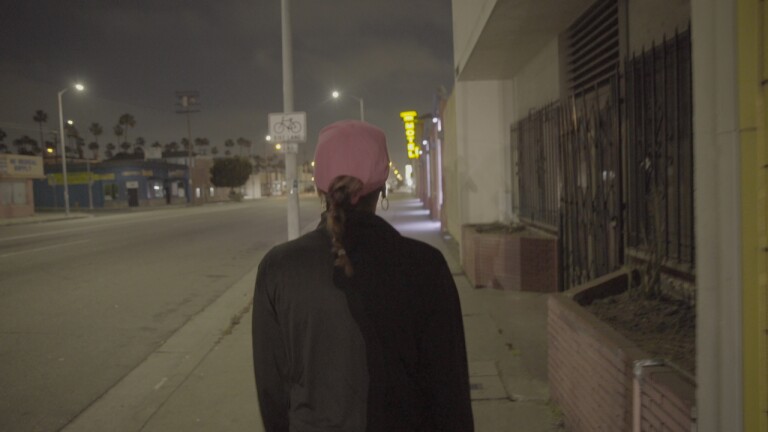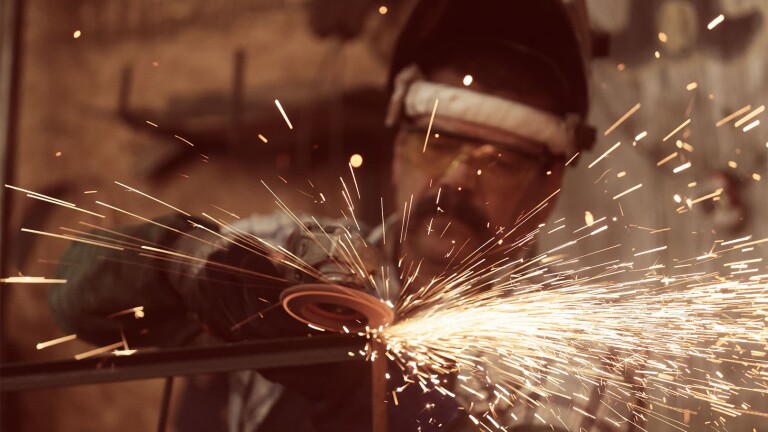
Split Rail: Calif. Bullet Train Still Proves Divisive
The battle over high-speed rail was reignited in recent weeks by Gov. Jerry Brown in his State of the State address, where he again pushed for the multi-billion dollar project to go forward. But whether it's a boon for California or simply a boondoggle remains to be seen. We've partnered with KQED-TV in San Francisco and the makers of the documentary "Train Wars" to take another look at the future of the bullet train in California.
TRANSCRIPT:
Val Zavala: In downtown San Francisco, construction has already begun on the $4 billion Transbay Transit Center. The vision is for a Grand Central Station of the West. And as these schematics in the construction office show, high-speed rail is literally the foundation of that vision.
Scott Boule / Transbay Transit Center: California is going to grow by millions and millions of people over the next few decades, and we need to be thinking of ways to be able to accommodate the transportation needs of all those additional people. High-speed rail is a solution to that pressing question. It creates the ability for people who are using the transit center to get to L.A. in 2 hours and 40 minutes. That's clearly good for San Francisco's economy; it's good for L.A.'s economy.
Zavala: Bullet trains traveling at 220 mph would arrive at Union Station in Los Angeles every few minutes from San Francisco, San Jose, Sacramento, Fresno, San Diego and Las Vegas.
Chuck Boyd / Transit User: In Europe, everyone travels by train. The trains are punctual. They arrive and leave within a minute of the time they say. They're fast and clean.
Curt Pringle / Fmr. Chair, Calif. High-Speed Rail Authority: I think it is an opportunity for California to continue to be the forerunner, the image maker, the state that has the big ideas in implementing new systems and new technologies. It's probably a way for California to continue to be California.
Zavala: But the prospects for high-speed rail have dimmed in recent months. At a recent rail authority meeting, CEO Roelof van Ark announced he will resign. Tom Umberg also announced that he was stepping down as chairman, though he will remain on the board.
Thomas Umberg / Calif. High-Speed Rail Authority: This project is bigger than any one person. It's going to be a project that's going to require courage, vision and leadership over the course of at least the next two decades. So there's giong to be a number of different chairs and there's going to be a number of different CEO's.
Zavala: Gov. Jerry Brown and President Obama have expended a lot of political capital on high-speed rail in California.
Gov. Jerry Brown [stock footage]: President Obama strongly supports the project and has provided the majority of the funds for the first phase. It is now your decision to evaluate the plan and decide what action to take. Without hesitation, I urge your approval.
Zavala: The train's price tag is now around $100 billion, more than double what voters approved in 2008 when the high-speed rail act passed by a narrow majority. Opponents in the legislature are proposing to halt the sale of the $9 billion in voter-approved bonds. But the final nudge that could spell its cancellation may come from an unlikely spot: the Central Valley farming community of Hanford, population 53,000. It's halfway between Los Angeles and San Francisco.
Brad Johns / Tomato Farmer: This is dead zero on the train. We're standing where the train tracks are going to be right now, where I have been told more or less, that that's the angle it's taking out across my property.
Zavala: Geography, engineering and politics have made this ground zero in the fight over high-speed rail. The Central Valley segment is the only part that can start construction in time to make deadlines for federal matching funds. Project engineers pushed to begin here, as van Ark himself explained in an earlier interview.
Roelof van Ark / Fmr. CEO, Calif. High-Speed Rail Authority: You better build that backbone system where you can operate at high speed to connect people over long distances. And that means you do not start in the city centers; you do not start at the ends. You basically start building that section where you're going to be operating at high speed. By the way, this is exactly how they do it in the rest of the world as well. Building in the cities is generally the last part that you build. Once you connect the metropolitan areas, you aim to get trains into the end stations. You normally do that through some form of phased implementation.
Zavala: In this so-called "blended approach," high-speed trains approaching Los Angeles would slow down and share tracks with commuter trains and Amtrak.
Donna Marshal [speaking at a public meeting]: My family has farmed in the Lakeside area of Kings County since the 1800s. My family will have to move.
Zavala: But the decision to start in the Central Valley fueled a backlash, evident at meetings such as this one in Bakersfield.
Ross Browning: I'm Ross, and this is my wife, Phyllis Browning. And we've lived here since 2005, but the property has been in her family since 1942. Her dad bought it, and he farmed 10 acres here.
Zavala: The Brownings' house, outside Hanford, may be demolished.
Browning: We bought this place with the idea that we were going to retire and spend the rest of our lives here. It's nice and quiet and serene. The grandkids love it when they come down here. And I see that all going up in smoke. I don't see that happening now.
Phyllis Browning: I'm not against the fast rail. I'm sure in time they're going to need fast rail. But, you know, they don't have to take just because they can, "Well we're just going to take all this property away from people." To me, it's just wrong. It's not right.
Zavala: Steve Gaspar and his wife, Anne, own this Hanford dairy. The tracks will split off a corner of the ranch.
Anne Gaspar: This is not what I voted for, 'cause I was one of those people that said, "Yeah, probably that sounds like a good idea, you know, getting to L.A. fast, that doesn't sound like a bad idea." We never thought that proposition would lead to what we're going through right now.
Zavala: The Gaspars are convinced the roar of 200-mph trains will terrorize their cows and they won't produce milk.
Steve Gaspar: As you can tell, the cows are calm creatures. They don't like to be bothered. It's very peaceful and quiet out here.
Zavala: But advocates say the cows will adapt, just as they have in France, where the TGV zooms past ranches regularly. That's a view shared by Brad Johns, the tomato farmer.
Johns: You can demolish the house, and they will pay you for the house. Or, in my case, I am going to have them pick up the house and relocate it to another location on the ranch, set it back down, drill the well, put in the septic, hook up the power - they were willing to pay for all that. And I'm out of pocket nothing.
Zavala: Johns even hopes to put up solar panels and sell power for the train.
Johns: I envision when this train is finally built that most of the folks here in town will get up on a Friday, decide that I would really like to go to San Francisco for a bowl of clam chowder, and then they will decide, "You know what? There's a really nice show playing in Las Vegas," and they will get back on that same train and be in Las Vegas for dinner, get back on the train and be home by midnight to sleep in their own bed.
Zavala: Such visions can still become reality, says Dan Richard, the new chair of the high-speed rail authority.
Dan Richard: This is a difficult and complex state, but underneath all that it's also a state where people believe that great things are possible, and I think that was what the governor was tapping into when he said that he supported high-speed rail, because he still felt California was a place where we do big things. But it doesn't mean that it's not hard.
Zavala: If supporters of high-speed rail prevail, San Francisco's Transbay may eventually get its bullet trains. Or, this vision for the Grand Central Station of the West may end up, as critics call it, "a very expensive bus stop."























